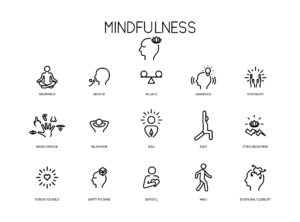In all the complexities of human connection, an invisible string binds us in profound and transformative ways: vulnerability. It is the raw, unguarded essence of our being—the willingness to expose our innermost thoughts, fears, and emotions to another soul. In the realm of platonic or romantic relationships, the power of vulnerability cannot be overstated. It is the cornerstone upon which trust, intimacy, and genuine connection are built.

At its core, vulnerability is about courage—the courage to be seen, flaws and all, and to embrace our authentic selves without reservation. It requires us to peel back the layers of pretense and perfection, to set aside the masks we wear to shield ourselves from judgment or rejection. In doing so, we invite others into the depths of our being, forging bonds that transcend superficiality and resonate on a soul level.
When we allow ourselves to be vulnerable in relationships, we create space for honesty, empathy, and understanding to flourish. We open the door to true intimacy, where walls are dismantled, and hearts are laid bare. It is in these moments of vulnerability that we connect with others in raw and real ways, forging bonds that withstand the tests of time and adversity.
Yet, embracing vulnerability is not without its challenges. It requires us to confront our insecurities and the fear of rejection or betrayal. It means risking discomfort and uncertainty in pursuit of authentic connection. However, it is precisely through these moments of discomfort that growth and transformation occur. Through vulnerability, we cultivate resilience, empathy, and compassion—not only for others but also for ourselves.
Vulnerability is sometimes misconstrued as a weakness in a world that often prizes strength and stoicism. However, nothing could be further from the truth. Vulnerability is a testament to our humanity, a courageous self-expression that fosters empathy and deep bonds of trust and intimacy.
So, I invite you to ponder the role of vulnerability in your own relationships. Are you willing to lower your defenses and embrace authenticity? Are you open to sharing your fears, hopes, and dreams with those you hold dear? As you navigate the complexities of human connection, remember that vulnerability is not a sign of weakness but rather a testament to your strength and resilience.



 Travel is a doorway to adventure, wonder, and discovery. Whether exploring far-off destinations or simply venturing to a new park or shop in your neighborhood, the magic of travel lies in its ability
Travel is a doorway to adventure, wonder, and discovery. Whether exploring far-off destinations or simply venturing to a new park or shop in your neighborhood, the magic of travel lies in its ability 



